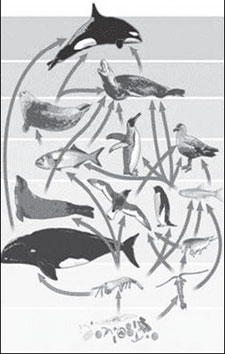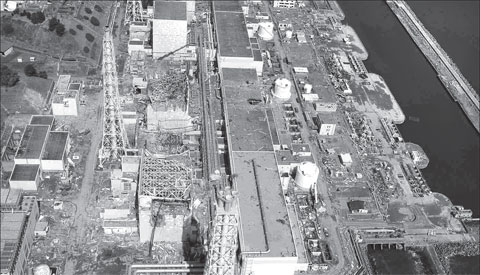Radioactivity testing of imported food items
M.C.S. Seneviratne, P. S. Shanaka Paranahewage-Atomic
Energy Authority
Do you know that the imported food such as milk powder, chilled fish
and canned fish items you purchase from the market, are screened to
check whether they are contaminated with radioactive elements? The
Atomic Energy Authority (AEA) which functions under the Ministry of
Power and Energy is engaged in screening all the above food items
imported to Sri Lanka, to find out whether they are contaminated or not
with radioactive elements. The scientific method used to measure the
radioactive level of food items is called Gamma Ray Spectrometry.

Nuclear power plant
The only institution having this facility in Sri Lanka is the Atomic
Energy Authority and these tests are done in the Nuclear Analytical
Laboratory of the Life Sciences Division (LSD) of AEA. This laboratory
has been accredited by the Sri Lanka Accreditation Board (SLAB) for
radioactivity measurement (TL 012-01) under the requirement of ISO/IEC
17025. If the radioactivity level is below a certain standard level, AEA
issues a certificate to the Ministry of Health which gives its approval
to release the food consignment from the customs for the consumption of
the people.
All living beings in this world are exposed to naturally occurring
radiation continuously due to (1) natural radioactive elements such as
Thorium (Th), Uranium (U), Potassium-40 (40K) etc. present on earth and
(2) cosmic rays which come from outer space continuously. This naturally
occurring radiation is not harmful to human being. Other than naturally
occurring radiation, all living beings are exposed to man-made radiation
too. Man-made radiation includes (1) radiation due to radioactive
sources used in medicine, industry, research etc. and (2) radioactive
elements released to the environment due to nuclear weapon testing and
nuclear power plant accidents. The radioactive elements released to the
environment will spread all over the world through the atmosphere and
finally falls on to the ground and enter human bodies through food
chains as shown in the diagram.
The two major power plant accidents Chernobyl accident on April
26,1986 and Fukushima Daiichi accident on March 11, 2011 have caused lot
of radioactive material to be leaked to the environment.
Contaminated milk food products
|

Fukushima nuclear power plant. File photo |
Testing of nuclear weapons in developed countries has also caused the
release of radioactive material to the environment. These radioactive
material cause contamination of our food products such as milk, fish,
etc. Thus imported food items are tested for radioactive contamination
in both developed countries and a few developing countries. Therefore
Atomic Energy Authority tests imported food items such as milk powder,
infant milk food, canned fish and chilled fish using gamma ray
spectrometry for radioactive contamination in order to make sure that
Sri Lankan public are not exposed to unnecessary harmful radiation.
According to the International Atomic Energy Agency (IAEA) during the
Chernobyl nuclear accident in 1986, the total radioactive material
released was 12×1018 Bq (Becqueral - Bq is a unit used to measure
radioactivity) and the amount of radioactive Cesium isotopes, 137Cs and
134Cs released were 0.05×1018 Bq and 0.09×1018 Bq respectively. This
radioactivity was released to the atmosphere and as a result of the
meteorological conditions these radioactive material has got deposited
on the surface of the countries in the Northern Hemisphere.
From the Fukushima Daiichi nuclear power plant accident in 2011, the
total radioactive material released was 4.7×1015 Bq and the amount of
radioactive Cesium isotopes, 137Cs released was 2.5×1015 Bq according to
the NHK news published after the nuclear accident. Unlike the Chernobyl
accident after the Fukushima nuclear accident lot of water used to cool
the reactor core was also released to the Pacific Ocean and this
contaminated water was spread all over the Pacific and Indian Oceans
with the sea currents.
Since 1997, the AEA has launched a project to determine the
radioactive levels of imported milk food items to protect the general
public from undue exposure to radiation by consumption of contaminated
milk food products. This project was extended in April 2011 to test
imported sea food (chilled fish and canned fish). Considerable number of
import and export food samples are tested per annum in this manner.
According to the Sri Lankan regulations, allowed maximum
radioactivity level is 20 Bq/kg for milk foods and 100 Bq/kg for all
other food items (Act 19 at 1969 and Gazette notification LD-B/73-1995).
The AEA is maintaining very low radioactivity levels for food items as
standard, for radioactive contamination, while some other developed
countries use high radioactive levels as standards to measure the level
of radioactivity. Very recently the Japanese government has set safety
levels as 50 Bq/kg for milk based products, 100 Bq/kg for rice and
vegetable and 500 Bq/Kg for all other food items due to the environment
contamination from Fukushima Daiichi nuclear power plant accident. |



